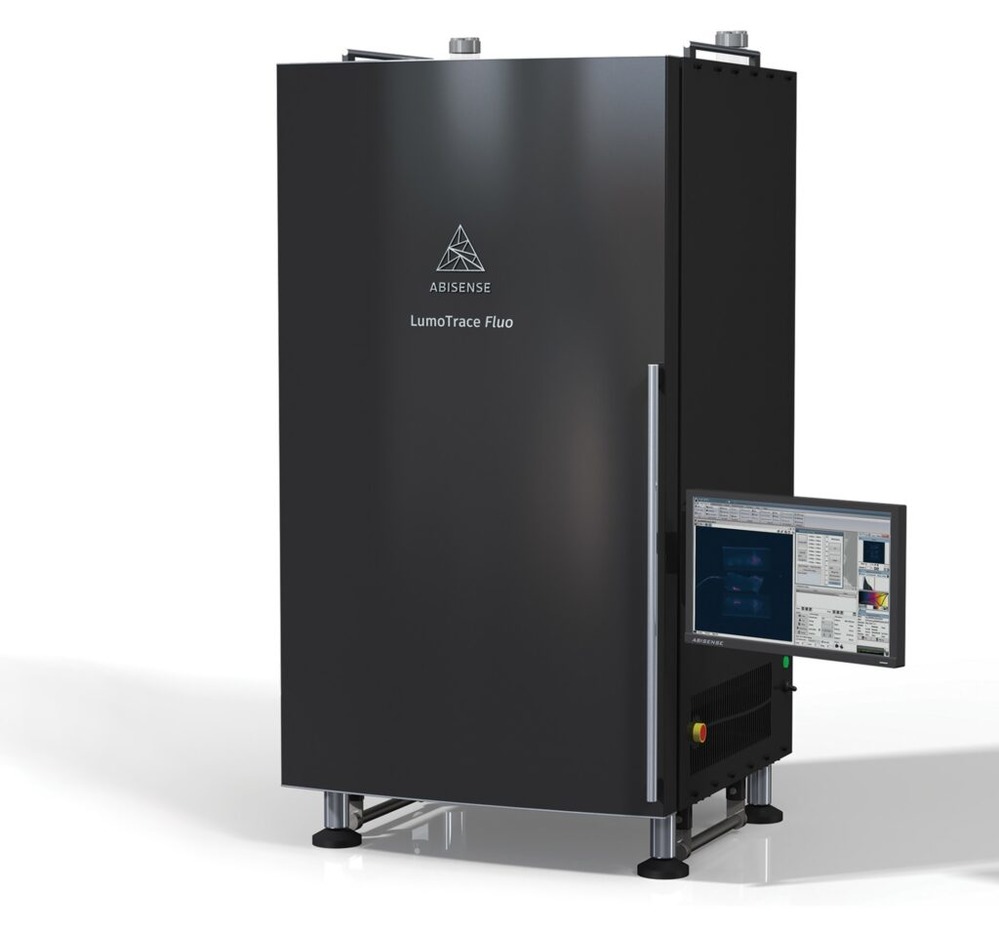Catalog
Metrology
525 products
View:
- Selected: 0Areas of use
- Selected: 0Item names
- Selected: 0Manufacturer
- Selected: 0Made in
- Selected: 0Additional
View:
525 products
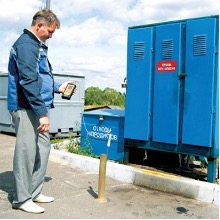
Oilman's Kit
from
58 491 ₽
It measures temperature when checking the quality of fuel in samplers.
•
TEKHNO-AS
Kolomna
Produced in: Moscow

Smart surface probe L=300 mm SZPV.300P with built-in flash memory
from
14 352 ₽
The smart surface probe L=300 mm SZPV.300 is designed to measure the temperature of various materials by direct contact of the probe with the measuring object and transmitting the measured value via Bluetooth to devices with the ThermoMonitor, Android program installed.
Operating conditions of the SZPV.300 smart probe
Ambient temperature, °C: -20...+55.
Relative humidity, %: not more than 80 at T=35 °C.
Atmospheric pressure, kPa: 86...106.
Functionality of the SZPV smart probe.300
Measurement of physical quantities with a resolution of 0.01.
Recording of measured values at intervals from 5 seconds to 23 hours 59 minutes 59 seconds (only smart probes with built-in memory).
Transmission of data about measured physical quantities via Bluetooth to a device with the ThermoMonitor, Android program installed.
Transmitting information about the state of charge of the built-in battery via Bluetooth to a device with the ThermoMonitor, Android program installed.
Automatic transition to sleep mode after 50 seconds.
The ability to connect an external power supply.
Possibility of calibration.
TEKHNO-AS
Kolomna
Produced in: Kolomna, Moscow region
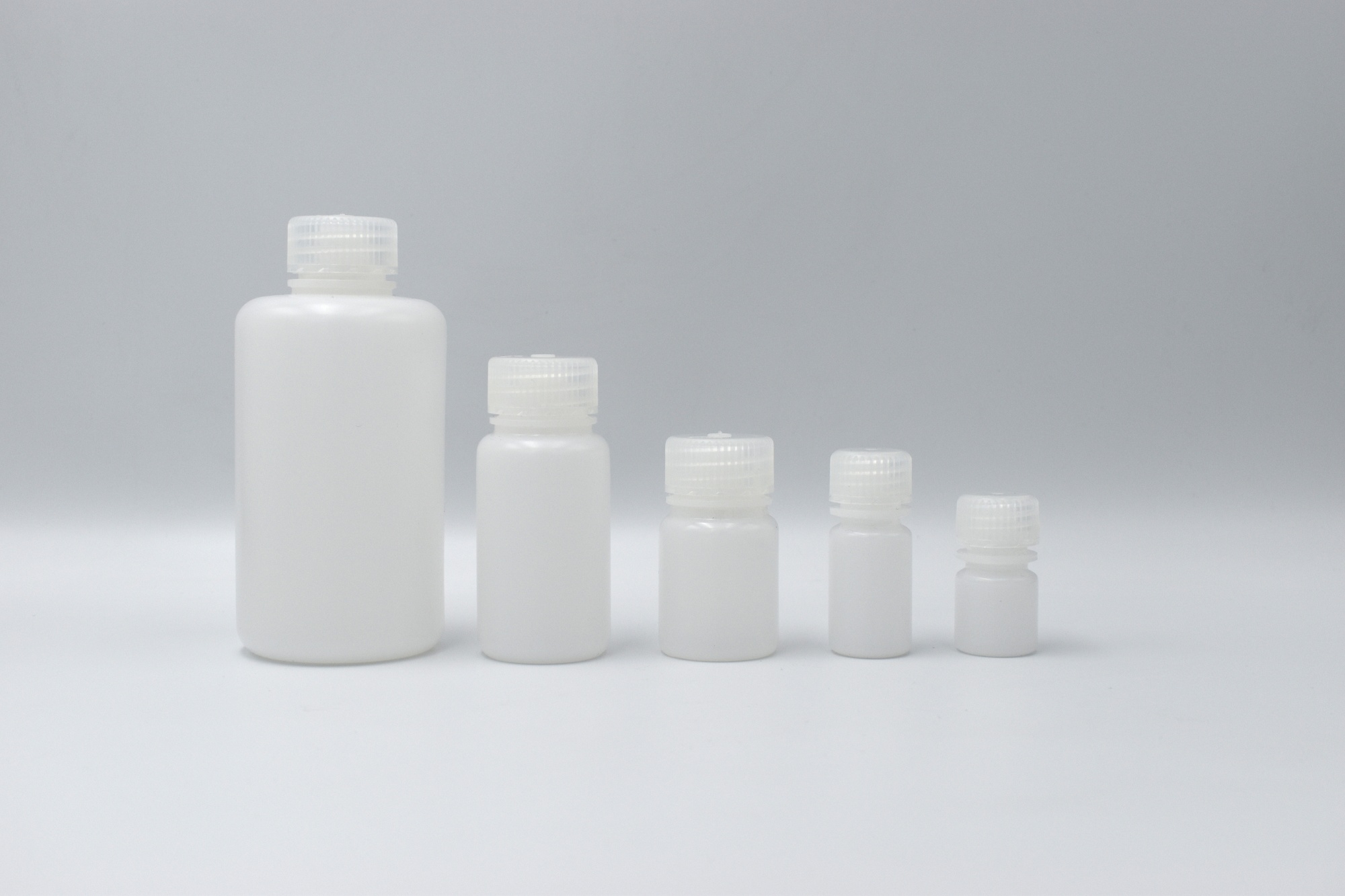
Wide neck bottles LDPE (matte)
from
20 ₽
Bottles are used to protect the basic properties of chemical, pharmaceutical and other liquid, paste-like, mixed fluid products.
Designed for scientific research.
Not intended for medical use.
Bottle: low density polyethylene (LDPE).
Cover: polypropylene (polypropylene copolymers). The addition of a nucleator (illuminator) is allowed for greater hardness (if necessary).
SkyGen
Moscow
Produced in: Vladimir
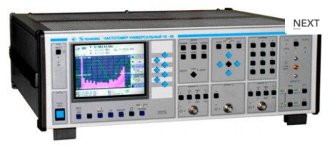
Universal frequency meter Ch3-89
The frequency meter is able to work both independently and as part of automated measuring systems with interfaces such as USB or RS-232.
Technical specifications
Frequency and period of sinusoidal signals (inputs A, B) 0.001 Hz - 150 MHz
Frequency of video pulse signals (inputs A, B) 0.001 Hz - 100 MHz
Frequency of continuous sinusoidal oscillations (input C) (0.1 - 1) GHz
Frequency of continuous sinusoidal oscillations (input D) (1 - 37.5) GHz
Carrier frequency of a continuous signal with frequency modulation (FM) (input D) Fh = (1 - 18) GHz, Fm = 100 Hz-100 kHz; frequency deviation from 10 kHz to 10 MHz
Carrier frequency of a continuous signal with amplitude modulation (AM) (input D) Fh = (1 - 18) GHz, Fm = 100 Hz - 100 kHz; AM factor up to 100%
Carrier frequency of a continuous radio pulse sequence (IM) signal (input D) Fn = (1-37.5) GHz, from 0.15 microseconds to 1ms, Fsl from 100 Hz to 3 MHz, from 2 to 103
Pulse duration 10 ns – 0.1 s
Time interval from -10 to 10 s
The duration of the front, the decay of the pulses is 5 ns - 100 microseconds
Phase difference of two synchronous sinusoidal signals from minus 360° to 360°
The measurement error of the phase difference of two synchronous sinusoidal signals is ± 0.36° (from 1 kHz to 1 MHz) ± 3.6° (above 1 MHz)
Input signal level:
•for sinusoidal signal (inputs A, B) (0.03 - 7.0) V
•for video pulse signal (inputs A, B) (0.1 - 10.0) V
•for a sinusoidal signal (input C) (0.03 - 1.0) V
•for sinusoidal and IM signals (input D) 10 MW (from 1 to 8 GHz); 40 MW (sv. 8 to 18 GHz); 50 MW (sv. 18 to 37.5 GHz).
The nominal frequency value of the reference quartz oscillator is 10 MHz
Relative error in the frequency of the quartz oscillator, no more than ± 2x10-7 in 12 months
Operating temperature range from 5 to 40 °C
AC power supply 220 V, 50 Hz
Power consumption, no more than 100 VhA
Overall dimensions, mm 496x174x459
Weight, not more than 16 kg
TEKHNOYAKS
Moscow
Produced in: Moscow
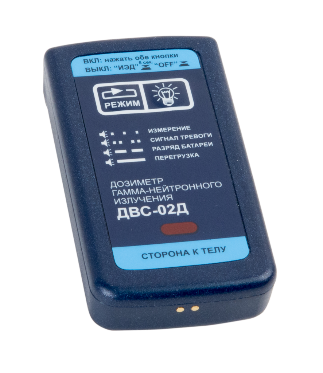
Individual gamma and neutron radiation dosimeter DVS-02D
Purpose:
measurement of individual dose equivalent (IED) of mixed gamma-neutron radiation;
measurement of individual dose equivalent (IED) of neutron radiation;
Doza
Zelenograd
Produced in: Moscow
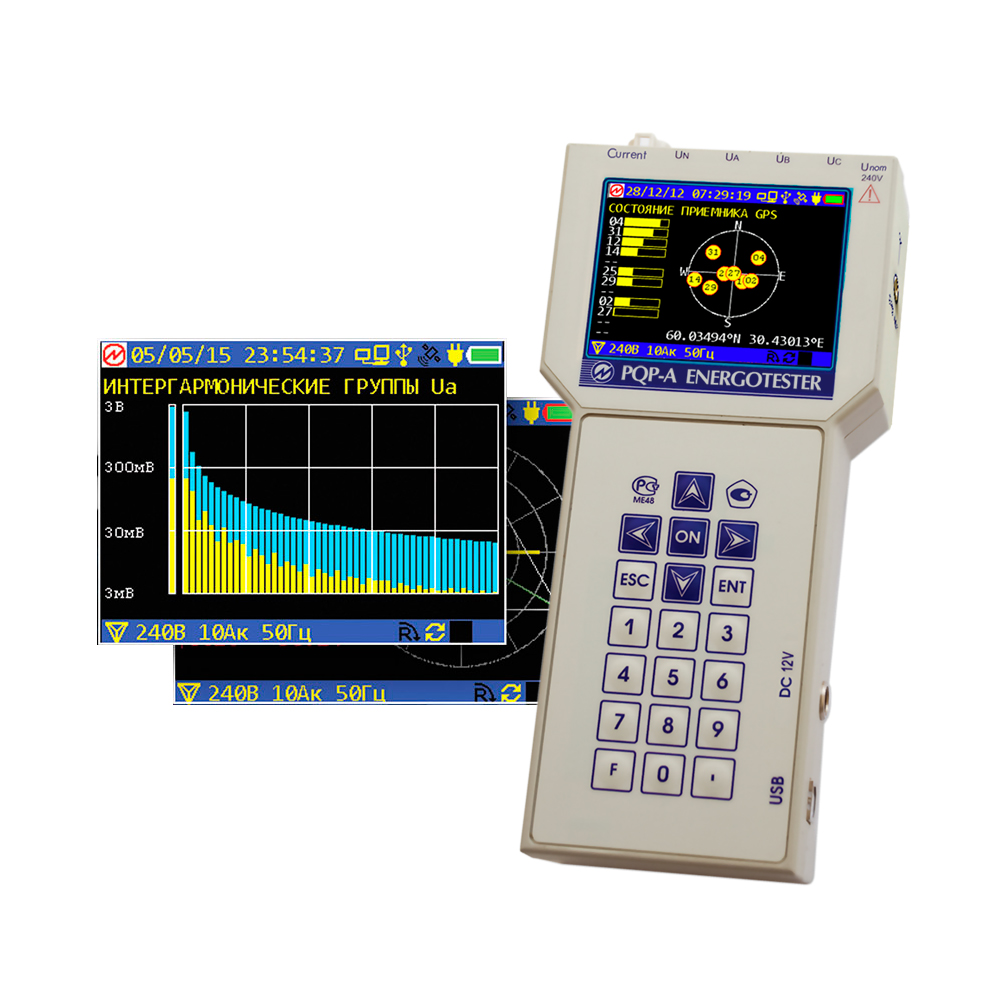
PKE-A Energy Tester
The devices are designed for:
measurements and registration of the main indicators of the quality of electrical energy established by GOST 32144-2013 (GOST R 54149-2010) with registration of protocols according to GOST 33073-2014;
measurements and registration of the main parameters of electrical energy in single-phase and three-phase electrical networks (including the effective values of voltages and currents with sinusoidal and distorted curves; active, reactive and full electrical power);
measurements of parameters of secondary circuits (load capacity of measuring transformers and voltage drop) in electric energy metering systems and electric energy losses in power supply lines.
functional test and verification of connection of meters of active and reactive power and energy, energy measuring converters of voltage, current at the places of their operation;
functional test and verification of the connection of single-phase and three-phase electric energy meters without breaking current circuits to detect theft of electricity;
measurements of electricity losses in the power supply line.
The PKE-A energy tester provides registration with subsequent transfer to a personal computer (PC) of statistical data on the PKE:
Values of the PCE according to GOST 30804.4.30 (GOST P 51317.4.30) and GOST 30804.4.7 (GOST P 51317.4.7) with a registration depth of 512 days;
Values and durations of voltage dips and overvoltages;
Values of the short-term dose of flicker;
Parameters of the electrical network and vector diagrams with the depth of registration:
- 24 hours for averaging time of 3 s,
- 200 days for averaging time of 10 min.
The program "Energy Monitoring ES" provides the formation of quality control protocols in the form of GOST 33073-2014.
Marsenergo
Saint Petersburg
Produced in: Saint Petersburg
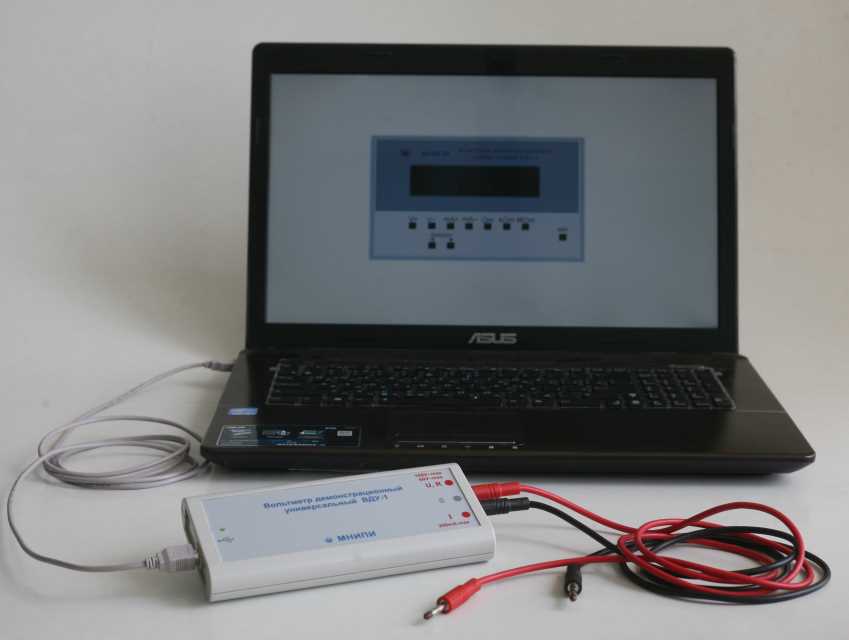
Voltmeter demonstration universal VDU-1
Designed to measure electrical quantities (DC voltage and strength, AC voltage and strength, DC electrical resistance) during demonstration work in physics. The device performs the function of a demonstration multimeter.
Technical specifications:
Measurement of DC voltage from 0 to 100 V
measurement error, not more than 1.0 %
Measurement of AC voltage from 0 to 60 V
measurement error, not more than 1.0%
measurement of DC power from 0.01 to 200
measurement error, not more than 1.0 %
Measurement of AC power from 0.01 to 200 mA
measurement error, not more than 1.0 %
Measurement of DC resistance from 1 ohm to 2 mOhm
measurement error, no more than 1.0%
power supply from the USB port of the computer
power consumption, no more than 0.6 V × A
weight, no more than 0.3 kg
overall dimensions 172x25x77 mm
MNIPI
Minsk
Produced in: Belarus, Minsk
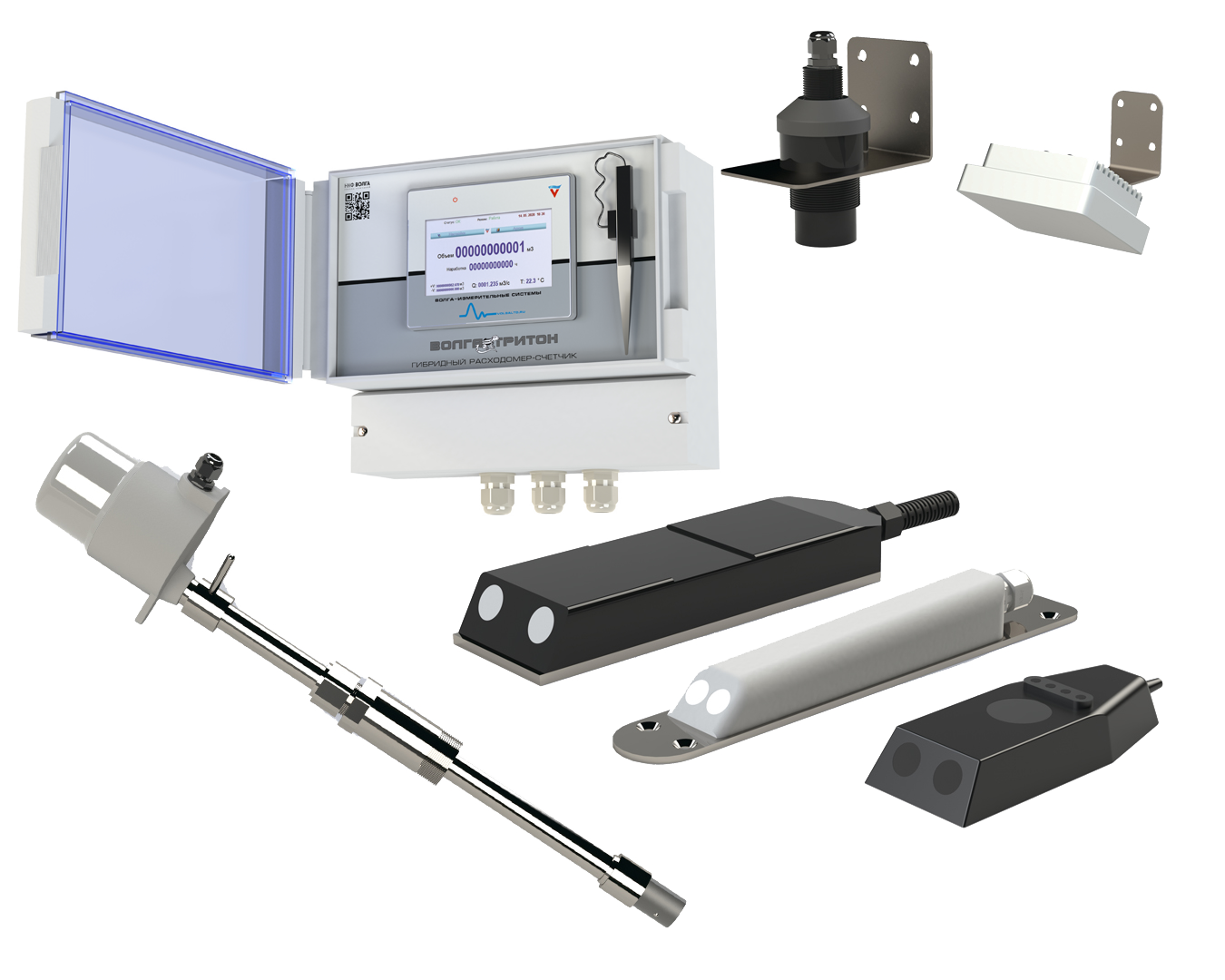
Non-pressure hybrid flow meter-counter Volga Triton
from
300 000 ₽
The Volga Triton pressure-free hybrid flow meter is designed to measure the volumetric flow of liquid in water ducts with a pressure-free and combined pressure-free flow mode. The submerged primary speed converter operates on the basis of the Doppler effect, emitting an ultrasonic signal towards the flow and receiving an echo reflected from particles in the flow with a frequency different from the frequency of the emitted signal. This frequency shift is called the "Doppler Shift" and it is proportional to the flow rate. A non-contact ultrasonic primary converter VBN-DG-01 or any other third-party liquid level converter with a unified current output of 4-20 mA can be used as a depth meter: radar, hydrostatic or ultrasonic.
The volumetric flow rate is determined both by the "area-speed" method and by MI2220-2013, depending on hydraulic conditions.
In non-contact (radar) mode, the Volga Triton flowmeter is designed to measure the volumetric flow rate of a liquid in a non-pressurized flow mode. The flow meter can be used as part of waste water metering units in non-pressure (gravity) sewage systems, open irrigation and reclamation channels, open or underground derivational non-pressure water pipelines of hydropower facilities, diverting supply and recirculation water pipelines of thermal power and other hydraulic structures with a non-pressure flow regime. The measurement technology is based on a non-contact radar method for measuring surface flow velocity and a non-contact ultrasonic/radar method for measuring water level.
As a water level meter, both the proprietary ultrasonic level sensor BP-G-01 and third-party sensors connected via unified digital or analog interfaces, for example, VEGAPLUS, can be used.
The pressure-free hybrid flow meter "Volga Triton" became the winner of the International Environmental Award EWA Award 2021 in the nomination Best technology.
Secondary converter
It is available in both stationary (~220 V) and portable versions with autonomous power supply.
Primary converters
VBN-DS-01 Primary speed converter for medium and large water pipelines
VBN-DS-02 Combined primary speed and depth converter for medium and small aqueducts
VBN-DS-03 is a combined low-profile primary speed and depth converter for small aqueducts.
VBN-DG-01 - contactless ultrasonic primary transducer - depth meter
Pipe sizes
Du, mm: 350, 400, 500, 600, 700, 800, 900, 1000, 1200, 1400, 1600, up to 6000 mm
ICF VOLGA
Moscow
Produced in: Moscow
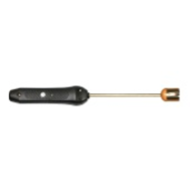
Surface smart probe L=150 mm SZPV.150
from
10 920 ₽
The surfaCE SMART probe L=150 mm SZPV.150 is designed to measure the temperature of various materials by direct contact of the probe with the measuring object and transmitting the measured value via Bluetooth to devices with the ThermoMonitor based on the Android program.
Operating conditions of the SZPV.150 smart probe
Ambient temperature, °C: -20...+55.
Relative humidity, %: not more than 80 at T=35 °C.
Atmospheric pressure, kPa: 86...106.
Functionality of the SZPV.150 smart probe
Measurement of physical quantities with a resolution of 0.01.
Recording of measured values at intervals from 5 seconds to 23 hours 59 minutes 59 seconds (only smart probes with built-in memory).
Transmitting data about measured physical quantities via Bluetooth to a device with the ThermoMonitor based on the Android program.
Transmitting information about the state of charge of the built-in battery via Bluetooth to a device with the ThermoMonitor based on the Android program.
Automatic transition to sleep mode after 50 seconds.
The ability to connect an external power supply.
Possibility of calibration.
TEKHNO-AS
Kolomna
Produced in: Kolomna, Moscow region

Rubidium frequency standard H1-1022
Rubidium frequency standards H1-1022 are available both in the standard version and with various options that have differences in functionality and technical characteristics:
option 01 is a device with high short–term stability of the output signal frequency;
option 02 – a device with a low-level phase noise in the output signal spectrum;
option 03 – the device has a binding module in its composition, which allows automatic correction of the frequency of the output signal according to the signal of the external time scale;
option 04 – the device has a synthesizer module in its composition, which allows you to receive a sinusoidal signal of a given frequency at the output of the device in the range from 100 Hz to 100 MHz in steps of the order of 4 × 10-6 Hz;
option 05 is a device with an extended range of ambient operating temperatures.
Through the built-in RS-232 interface, telemetry information is collected from the device nodes, and commands to change the frequency of the output signal are transmitted.
The H1-1022 frequency standards have no domestic analogues in terms of their small dimensions, weight, power consumption and operating time, as well as in terms of their numerous functional capabilities.
Ruknar
Nizhny Novgorod
Produced in: Nizhny Novgorod

Spectrum Analyzer SK4-105
The spectrum analyzer is capable of working both independently and as part of automated measuring systems with USB and ETHERNET interfaces.
Technical specifications
Frequency range from 9 kHz to 20 GHz
The basic error of frequency measurement is ± (3-10'7hG + 0.2 Hz)
Viewing bands 0; 10 Hz - 20 GHz
Bandwidth minus 3 dB from 1 Hz to 8 MHz
Self-noise level from minus 156 to 145 dB MW/Hz
The basic level measurement error is ± (1.2-1.8) dB
The relative level of interference caused by intermodulation distortions of the 3rd order from minus 50 to 65 dB
The relative level of interference caused by combination distortions from minus 60 to 80 dB
Amplitude scales linear, quadratic, logarithmic (0.1- 20) dB/div
The frequency range of the tracking generator is from 1 MHz to 8 GHz
Operating temperature range from 5 to 40 °C
AC power supply 220 V, 50 Hz
Power consumption, no more than 85 VA
Overall dimensions, mm 420x213x172
Weight, not more than 8 kg
TEKHNOYAKS
Moscow
Produced in: Moscow
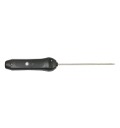
Submersible smart probe L=150 mm SZPG.150
from
10 626 ₽
The submersible smart probe L=150 mm SZPG.150 is designed to measure the temperature of various materials by direct contact of the probe with the measuring object and transmitting the measured value via Bluetooth to devices with the ThermoMonitor, Android program installed.
Operating conditions of the SZPG.150 smart probe
Ambient temperature, °C: -20...+55.
Relative humidity, %: not more than 80 at T=35 °C.
Atmospheric pressure, kPa: 86...106.
Functionality of the SZPG.150 smart probe
Measurement of physical quantities with a resolution of 0.01.
Recording of measured values at intervals from 5 seconds to 23 hours 59 minutes 59 seconds (only smart probes with built-in memory).
Transmitting data about measured physical quantities via Bluetooth to a device with the ThermoMonitor, Android program installed.
Transmitting information about the state of charge of the built-in battery via Bluetooth to a device with the ThermoMonitor, Android program installed.
Automatic transition to sleep mode after 50 seconds.
The ability to connect an external power supply.
Possibility of calibration.
TEKHNO-AS
Kolomna
Produced in: Kolomna, Moscow region
